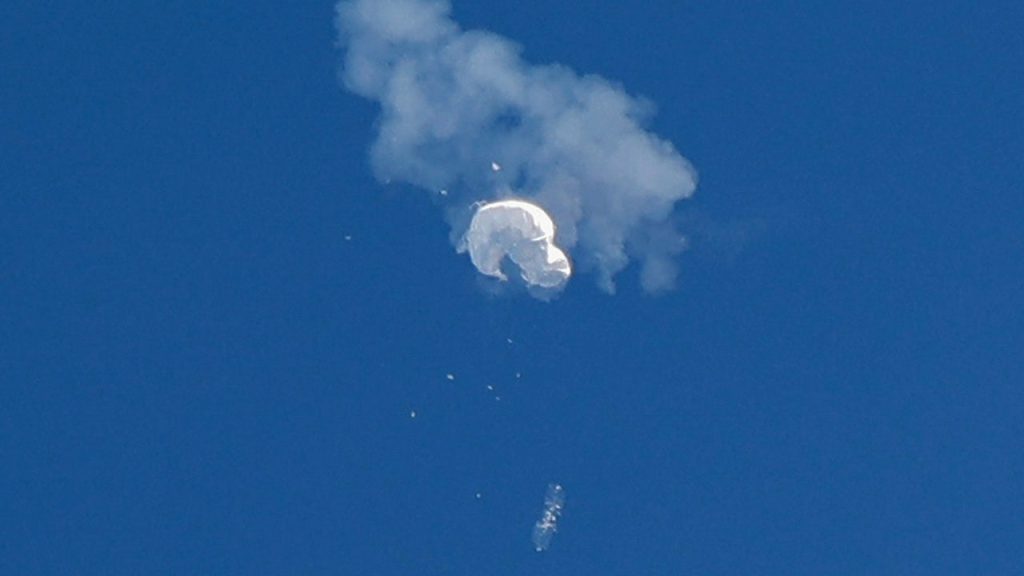Unveiling the Chinese Spy Balloon: A Web of American Technology
In early 2023, a Chinese spy balloon captured global attention as it traversed the United States, from Alaska to the East Coast, before being shot down by the military off the South Carolina coast on February 4. Despite Beijing’s claims that the balloon was a mere weather research device, U.S. intelligence agencies swiftly determined it was designed for espionage. This revelation sparked a series of investigations and a detailed technical analysis by the U.S. military, which uncovered a significant and surprising detail: the balloon was equipped with technology from several American companies. This finding not only deepened the mystery but also raised critical questions about the commercial availability of sophisticated equipment and the potential for it to fall into the hands of adversaries.
The Contents of the Spy Balloon: A Mix of High-Tech and Mundane
Among the equipment recovered from the downed balloon were a satellite communication module, various sensors, and other advanced surveillance devices. Interestingly, some of these components were housed in a simple foam cooler, a detail that underscores the blend of high-tech and everyday materials used in the mission. The satellite communication module, specifically an Iridium 9602 short burst messaging unit, was a key piece of this technological puzzle. Produced by Iridium, a Virginia-based global satellite communications provider, this module is typically used for low-power, low-bandwidth communication, perfect for sending small data packets over long distances.
Iridium’s Response: Vetting and Misuse
When approached by Newsweek for comment, Jordan Hassim, Iridium’s executive director for communications, emphasized that the company does not condone the misuse of its technology. "There’s no way for us to know what the use is of a specific module," Hassim explained. "We need to know the module specifically. For us, it could be a whale wearing a tag tracking it, it could be a polar bear, or an explorer hiking a mountain." This statement highlights the dual-use nature of many technological components, which can serve innocent and nefarious purposes alike. If Iridium were to discover that one of its devices was being misused, Hassim stated that the company would immediately collaborate with U.S. government partners to disable it, emphasizing a commitment to security and ethical use.
The Other American Companies Involved
The list of American companies whose technology was found in the Chinese spy balloon extends beyond Iridium. Texas Instruments, a leading semiconductor company, had components in the balloon. Omega Engineering, known for precision sensors, also had its equipment represented. Additionally, Amphenol All Sensors Corp., which specializes in pressure sensors, and Onsemi, a provider of semiconductor solutions, were identified as sources of the technology. The inclusion of these well-known and respected companies adds another layer of complexity to the issue, as it suggests that even the most advanced and technical industries can unwittingly contribute to espionage activities.
International Players in the Mix
The technical analysis did not stop at American shores. Equipment from STMicroelectronics, a Swiss company that is a global leader in semiconductors and microelectronics, was also recovered and identified. This international dimension of the balloon’s technology further complicates the narrative, as it indicates that the global supply chain may be vulnerable to exploitation by state actors. The presence of components from multiple countries underscores the interconnectedness of modern technology and the challenges in ensuring that such components are not used for harmful purposes.
Implications and Lessons Learned
The discovery of American and international technology aboard the Chinese spy balloon raises significant concerns about the oversight and regulation of the global technology market. It highlights the need for stricter controls on the sale and distribution of dual-use items, which can have legitimate commercial applications but also pose security risks. This incident serves as a stark reminder that even the most technologically advanced nations are not immune to the complex and ever-evolving landscape of espionage. As the investigation continues, it is clear that the intelligence community and the tech industry must work together more closely to prevent such breaches in the future.












